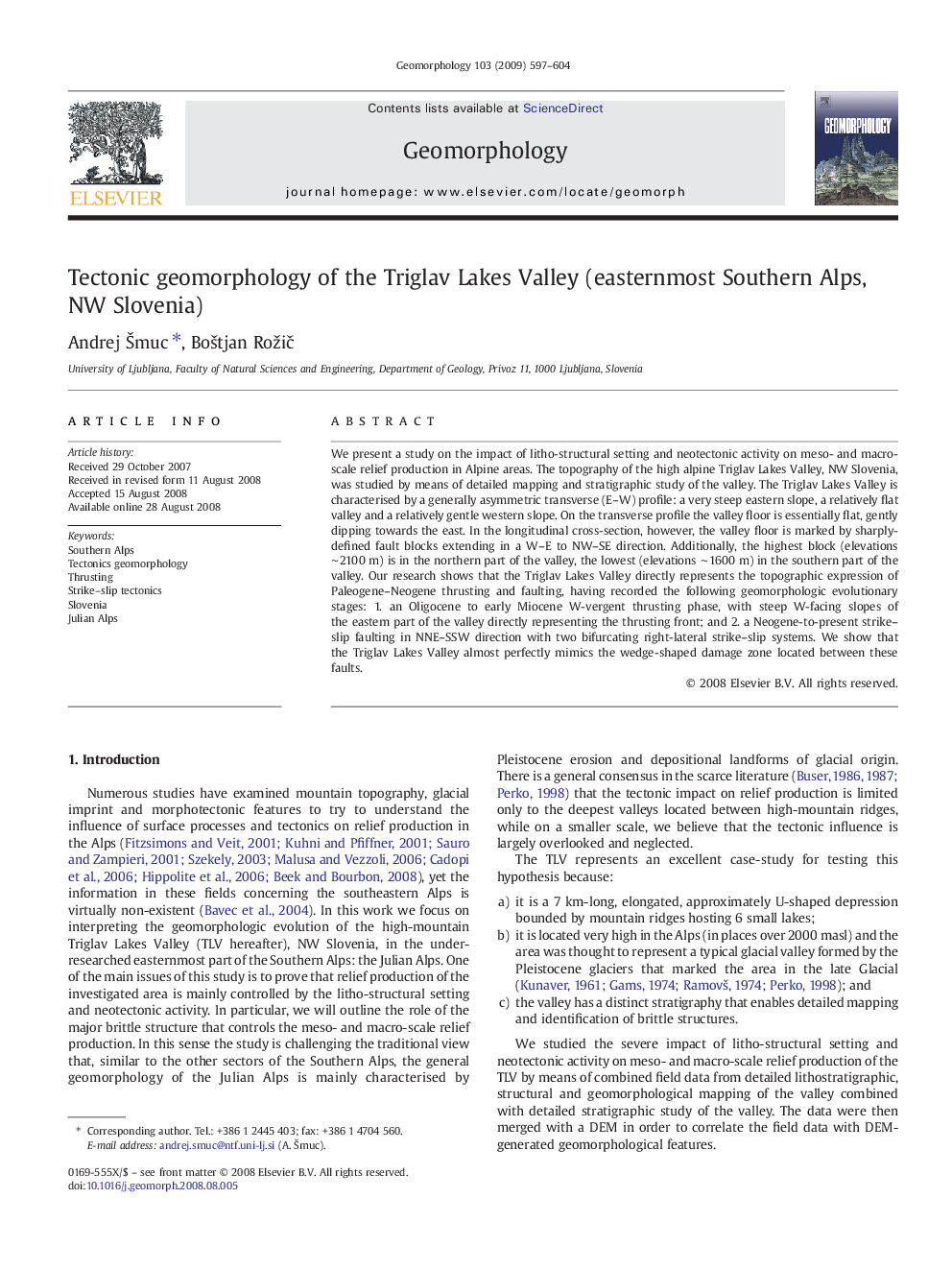| Article ID | Journal | Published Year | Pages | File Type |
|---|---|---|---|---|
| 4686421 | Geomorphology | 2009 | 8 Pages |
We present a study on the impact of litho-structural setting and neotectonic activity on meso- and macro-scale relief production in Alpine areas. The topography of the high alpine Triglav Lakes Valley, NW Slovenia, was studied by means of detailed mapping and stratigraphic study of the valley. The Triglav Lakes Valley is characterised by a generally asymmetric transverse (E–W) profile: a very steep eastern slope, a relatively flat valley and a relatively gentle western slope. On the transverse profile the valley floor is essentially flat, gently dipping towards the east. In the longitudinal cross-section, however, the valley floor is marked by sharply-defined fault blocks extending in a W–E to NW–SE direction. Additionally, the highest block (elevations ∼ 2100 m) is in the northern part of the valley, the lowest (elevations ∼ 1600 m) in the southern part of the valley. Our research shows that the Triglav Lakes Valley directly represents the topographic expression of Paleogene–Neogene thrusting and faulting, having recorded the following geomorphologic evolutionary stages: 1. an Oligocene to early Miocene W-vergent thrusting phase, with steep W-facing slopes of the eastern part of the valley directly representing the thrusting front; and 2. a Neogene-to-present strike–slip faulting in NNE–SSW direction with two bifurcating right-lateral strike–slip systems. We show that the Triglav Lakes Valley almost perfectly mimics the wedge-shaped damage zone located between these faults.
